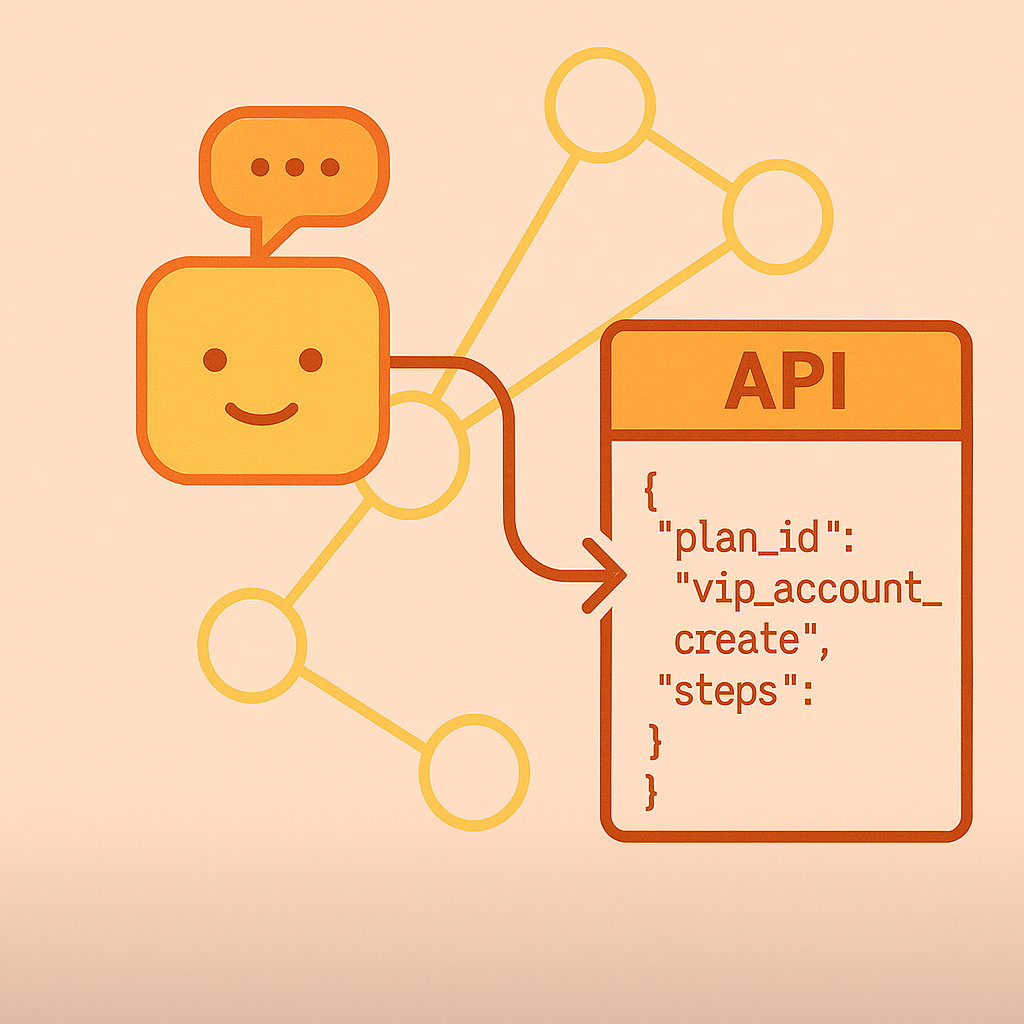
Agent Interfaces Are the New APIs
The early days of AI integration were all about access: expose a few endpoints, teach the model to call them, and celebrate when it worked. These days, we are past the point where simple access is enough. As teams scale up their use of LLMs and AI agents, the real bottleneck has become interface reliability. Tools are callable, but they’re not always usable. They’re hard to chain, hard to reason about, and often require repeated prompting just to get right.
This is mostly because (as we’ve written about before) APIs were built for programs, not agents. Even when they’re wrapped in agent-aware formats like function specs or MCP Tools, APIs still lack the structure agents need to act intelligently.
This blog explores how agent interfaces are evolving into a new kind of integration layer: a way to connect natural-language prompts to structured systems through reusable execution plans, shared context, and semantic contracts. We’ll break down what makes an interface agent-usable, why traditional tool patterns fall short, and how a new class of agent-native API design is emerging.
Why Every Tool Turns Into a Mini Project
By the time you’ve wrapped, documented, prompted, constrained, and debugged a tool, you’re no longer just exposing functionality, you’re practically building a system around it.
Not intentionally. It just happens. You start with a method, but then you add a warning here, a fallback there, a few orchestration tweaks somewhere else. You clarify usage in the system prompt. You gate certain calls by user type. You adjust the response format so it can be chained.
Soon, that single tool has become a constellation of behaviors, none of which live in the same place.
It’s like cleaning up after a messy roommate. You don’t redesign the apartment; you just keep finding new ways to hide the clutter. Over time, the logic calcifies. Constraints get duplicated. Prompts start contradicting each other. And you end up managing not a clean toolchain, but a slow-moving pile of workflow garbage.
There’s no shame in it. It’s just what happens when we don’t have interfaces that carry meaning. The system shifts from tool invocation to tool archaeology.
From Reasoning to Reuse: Capturing What Works
The first time an agent completes a complex task, it’s often messy. It reasons through tool choices, guesses at constraints, and needs a lot of guidance. But once it succeeds, you’ve essentially discovered the right flow.
So why make the agent solve it again?
Today, every natural language request is treated like a new problem. Even if it’s the 20th time someone has asked for a password reset or filed a refund request, the agent still burns tokens to reason through the same logic.
That’s wasteful, in both performance and architecture.
So, imagine a system that could store the successful flows, not just as logs, but as reusable execution plans. Plans that include tool choices, input mapping, sequencing, constraints, and expected outputs. Plans that act as compiled interfaces, ready to be reused anytime a similar prompt appears.
It would look less like this:
“Here are 12 tools. Hope the agent chooses wisely.”
And more like this:
{
"plan_id": "vip_account_create",
"steps": [
{
"tool": "create_account",
"inputs": {
"name": "Jane Doe",
"email": "abc@def.com"
}
},
{
"tool": "assign_vip_status",
"inputs": {
"email": "abc@def.com"
}
}
]
}
The logic is no longer scattered across code, prompts, and orchestration. It’s embedded in the interface itself: structured, portable, and ready to be executed with confidence. In fact, this is the future of agent integration: not just tool access, but tool memory.
Toward Reusable Interfaces and Scalable Agent Infrastructure
The Model Context Protocol (MCP) has already solved one of the hardest challenges: giving agents a standardized way to access backend systems. But as adoption grows, new challenges emerge. Tools still get misused. Inference cost scales with tool count. Latency creeps in as agents reason through decisions they’ve made before.
And as developers continue to scale AI integration, we are still treating every prompt like a new problem, because the systems we’ve built expect improvisation. They were designed to handle novelty. Even when a workflow has already been solved (say, creating an account or canceling an order), we re-reason, re-prompt, re-infer. Because there’s no shared layer that holds on to successful patterns and makes them available the next time.
Meanwhile, the more tools we add, the messier it gets. Each tool brings with it a cloud of invisible dependencies: usage rules, timing constraints, edge cases, naming conventions. They don’t travel with the tool itself, so we keep duct-taping logic into prompts, configs, and orchestration layers.
That’s why we need a different, structured model where tool behavior isn’t reinvented each time. Reusable agent interfaces make this possible. Instead of teaching the agent how to assemble the logic every time, we give it something more declarative: a semantic execution plan that encodes what worked before and when to use it again.
By surfacing structure, reusing plans, and reducing friction, we can shift from improvisation to intent, making MCP-powered integration faster, more accurate, and dramatically more scalable.This goes beyond performance or cost, though those benefits are tangible. We are building systems that accumulate knowledge, not just improvise through it. And once you start designing for reuse instead of guesswork, interfaces become composable, behavior becomes predictable, and logic becomes portable across agents, workflows, and environments.
Customized Plans for Real Enterprise Needs
Gentoro makes it easier to operationalize AI across your enterprise. Get in touch to explore deployment options, scale requirements, and the right pricing model for your team.

